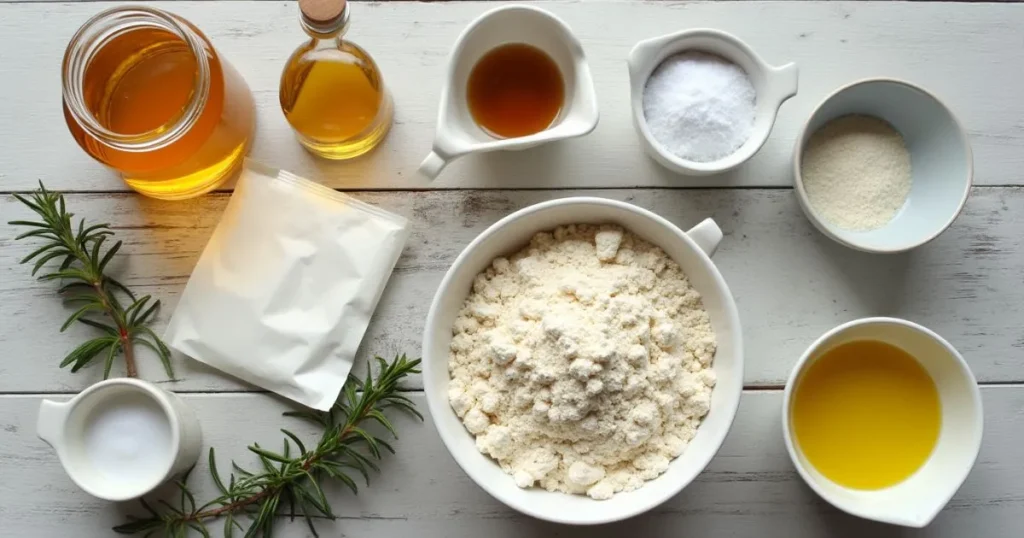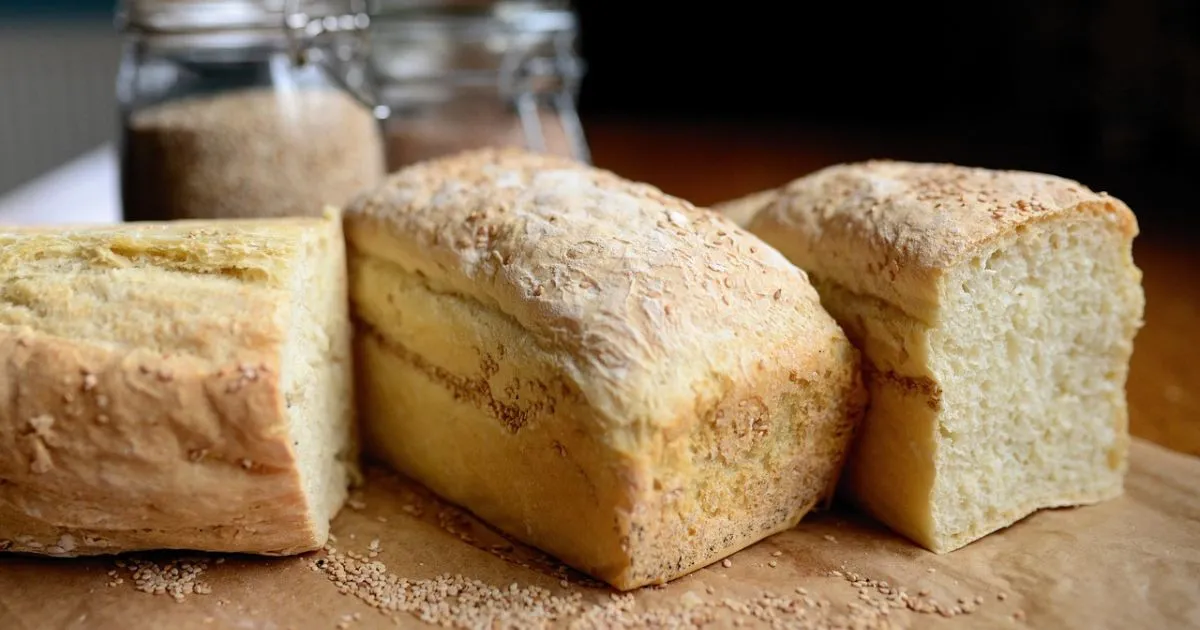Baking bread is more than just an act of preparing a meal; it’s a comforting ritual that connects us to the past, to generations of home bakers who have perfected the art of kneading dough and watching it rise. But what if you could elevate this age-old tradition with a grain that has stood the test of time? Einkorn, one of the world’s oldest cultivated grains, has a history that dates back over 10,000 years. It’s making a resurgence in kitchens everywhere, thanks to its unique flavor and remarkable health benefits.
Einkorn bread offers a nutty, slightly sweet flavor, and a texture that is light and fluffy. It’s not just a healthier alternative to modern wheat but also a way to bring a bit of ancient history into your home baking. In this article, we’ll explore easy and mouthwatering einkorn bread recipes that you can try, whether you’re a seasoned baker or a beginner eager to experiment.
Table of Contents
What is Einkorn and Why is it a Great Choice for Baking?
Introduction to Einkorn
Einkorn (Triticum monococcum) is often called the “first wheat” because it was one of the first wild grasses to be cultivated by humans over 10,000 years ago. Unlike modern wheat, which has been crossbred and hybridized to enhance yield and gluten content, einkorn has a simpler structure. It has fewer chromosomes, and its genetics remain closer to wild grass varieties, making it a more natural and less processed option.
One of the key differences between einkorn and modern wheat is its gluten content. Einkorn contains less gluten, which makes it easier for some people to digest. The gluten it does have is different in structure, and as a result, einkorn bread is often lighter and fluffier than bread made with traditional wheat flour.
Health Benefits
Einkorn is a nutritional powerhouse. Compared to modern wheat, it has higher levels of protein, essential fatty acids, and antioxidants. It’s rich in vitamins like A, B, and E, as well as minerals such as iron, zinc, and magnesium. This makes einkorn bread not only a delicious choice but also a healthy one.
People with sensitivities to modern wheat may find einkorn easier to digest, though it is important to note that einkorn does still contain gluten. So, while it’s a great option for those with mild gluten sensitivity, it’s not suitable for those with celiac disease or severe gluten intolerance.
Why Bake with Einkorn?
If you’re wondering why you should bake with einkorn, the answer is simple: it offers both a unique flavor and a superior texture. The nutty and slightly sweet taste of einkorn sets it apart from regular wheat bread. When baked, it creates a soft, slightly chewy texture, with a lighter crumb and a more aromatic, rich flavor profile.
Its lower gluten content means the dough doesn’t become as tough or dense, making it a great choice for those who enjoy a softer, fluffier loaf. It’s also perfect for experimenting with different flavors, whether you prefer savory herbs, sweet additions like raisins or cinnamon, or even a tangy sourdough variation.
Basic Einkorn Bread Recipe: The Foundation of Deliciousness
Here’s a simple and delicious recipe to get you started with einkorn bread. This basic loaf will show you just how easy it is to make homemade einkorn bread, and it’s versatile enough to serve with any meal.
Ingredients

| Ingredient | Quantity |
|---|---|
| Einkorn flour | 3 cups |
| Warm water | 1 cup |
| Active dry yeast | 1 packet |
| Salt | 1 tsp |
| Honey or sugar | 1 tbsp |
| Olive oil | 2 tbsp |
Instructions
- Activate the yeast: In a small bowl, combine warm water (about 110°F or 43°C) with the honey or sugar. Sprinkle the active dry yeast over the surface and let it sit for about 5 minutes, until it becomes foamy and bubbly.
- Mix the dough: In a large mixing bowl, combine the einkorn flour and salt. Make a well in the center and pour in the activated yeast mixture along with the olive oil. Stir until everything comes together to form a dough.
- Knead the dough: Transfer the dough to a lightly floured surface and knead it for about 8-10 minutes. Einkorn dough is more delicate than traditional wheat dough, so be gentle. You should end up with a smooth and slightly sticky dough.
- First rise: Place the dough in a lightly oiled bowl and cover it with a damp towel. Allow it to rise in a warm place for about 1-2 hours, or until it has doubled in size.
- Shape and second rise: Punch down the dough and shape it into a loaf. Place it in a greased loaf pan and let it rise for another 30 minutes to 1 hour.
- Bake the bread: Preheat your oven to 375°F (190°C). Bake the bread for 25-30 minutes, or until the top is golden brown and the loaf sounds hollow when tapped on the bottom.
- Cool and enjoy: Allow the bread to cool completely before slicing. This helps the texture set and prevents the bread from becoming gummy.
Tips for Success
- Weigh your flour: Using a kitchen scale to measure your einkorn flour will ensure more accurate measurements.
- Fresh yeast: Make sure your yeast is fresh to get the best rise and texture.
- Baking stone: If you have one, a baking stone helps to distribute heat evenly and can improve the crust.
Variations of Einkorn Bread: Explore New Flavors
Once you’ve mastered the basic einkorn bread recipe, it’s time to get creative. Einkorn’s mild flavor makes it a versatile base for a variety of breads, both savory and sweet.
Einkorn Sourdough
If you love tangy sourdough bread, you can make a delicious einkorn sourdough loaf. The key to this variation is maintaining a healthy einkorn starter. Start by mixing equal parts einkorn flour and water, and let it ferment for several days, feeding it daily with more flour and water. The sourdough culture will give the bread a distinct tang and chewy texture.
Sweet Einkorn Bread
For something a little sweeter, try a soft einkorn loaf with a hint of sweetness. This is perfect for breakfast or dessert. You can add in ingredients like cinnamon, raisins, or even chocolate chips to create a bread that’s as indulgent as it is nutritious.
Herbed Einkorn Bread
Add fresh herbs like rosemary, thyme, or garlic to your einkorn bread dough to create a flavorful, aromatic loaf. This herbed version pairs wonderfully with soups, salads, or as a side to your favorite dinner.
Tips for Baking with Einkorn Flour
Baking with einkorn flour requires a few adjustments, as it behaves a bit differently from modern wheat flour. Here are some helpful tips to ensure your einkorn bread turns out perfectly every time.
Hydration
Einkorn flour absorbs more water than regular wheat flour, so you may need to adjust the liquid ratio in your recipe. Start with a bit less flour and add more as needed to achieve a soft, slightly sticky dough.
Gluten Development
Einkorn flour has less gluten than modern wheat, which makes it less elastic. Over-kneading can result in a dense loaf, so be gentle when kneading. A gentle stretch and fold technique is often more effective than traditional kneading for einkorn dough.
Storage
Einkorn flour has a shorter shelf life than modern wheat, so it’s important to store it properly. Keep your einkorn flour in an airtight container in a cool, dry place, or in the fridge or freezer to extend its freshness.
How to Make Einkorn Bread Without a Stand Mixer
If you don’t have a stand mixer, you can still make einkorn bread by hand. Here’s how:
Step-by-Step Guide
- Mix the ingredients: Combine the einkorn flour, salt, and activated yeast mixture by hand in a large bowl.
- Knead by hand: Use the “stretch and fold” method to knead the dough. This prevents overworking and keeps the dough light and airy.
- Warm rise: Place the dough in a warm area to rise. You can create a warm environment by preheating the oven to its lowest setting for a few minutes, then turning it off and letting the dough rise inside.
Helpful Tips
- Patience: Let the dough rise fully for the best texture.
- Damp towel: Use a damp cloth to cover your dough to prevent it from drying out during the rise.
Incorporating Einkorn Bread into Your Meals
Einkorn bread is incredibly versatile and can be used in a variety of meals throughout the day.
- Breakfast: Toast a slice of einkorn bread and top it with avocado, jam, or your favorite spread.
- Lunch and Dinner: Use einkorn bread to make sandwiches or serve it as a side to soups and stews.
- Snack: Pair einkorn bread with cheese, olives, or your favorite dip for a simple yet satisfying afternoon snack.
Troubleshooting Common Problems When Baking with Einkorn
Here are some common issues you might encounter when baking with einkorn flour, along with tips for troubleshooting them.
Dough Too Sticky
Einkorn dough can be stickier than regular dough. If this happens, simply add a little extra flour until it becomes manageable, or decrease the liquid in the recipe.
Dense Bread
If your bread is dense, it may not have risen long enough. Einkorn bread requires a longer rise time than regular bread. Make sure you allow ample time for both the first and second rises.
Crust Too Hard
If your bread has a crust that’s too tough, try baking at a slightly lower temperature or cover it with a Dutch oven to create a steamy environment.
How to Make Einkorn Bread in a Bread Machine
If you prefer to use a bread machine, einkorn bread works well with these handy devices. Here’s how to make einkorn bread in a bread machine.
Step-by-Step Instructions
- Add wet ingredients: Start by adding the warm water and olive oil to the bread machine’s pan.
- Add dry ingredients: Add the einkorn flour, salt, and yeast.
- Select the “basic bread” setting: Choose the setting that works for your machine.
- Let the bread cool: Once the bread is done baking, allow it to cool completely before slicing.
Bread Machine Tips
- Always refer to your bread machine’s manual for the best results.
- Start with a test batch to figure out the ideal settings for your bread machine.
FAQ Section: Everything You Need to Know About Einkorn Bread
What is Einkorn flour, and where can I buy it? Einkorn flour is made from the ancient einkorn grain and can be found in health food stores, online retailers, or specialty grain shops.
Is Einkorn bread suitable for people with gluten sensitivity? Einkorn has less gluten than modern wheat and is easier to digest for some people, but it is not gluten-free and is not safe for those with celiac disease.
Can I substitute einkorn flour for regular flour in recipes? Yes, you can substitute einkorn flour for regular flour, but you may need to adjust the amount of liquid and kneading time due to its lower gluten content.
Conclusion
Einkorn bread offers a unique and nutritious twist on traditional bread, making it a fantastic choice for both health-conscious individuals and bread lovers alike. Whether you stick with the classic loaf or get creative with variations, einkorn bread is sure to become a favorite in your home kitchen. With the right techniques and a little patience, you’ll soon be baking loaves of einkorn bread that are not only healthier but incredibly delicious. Happy baking!
